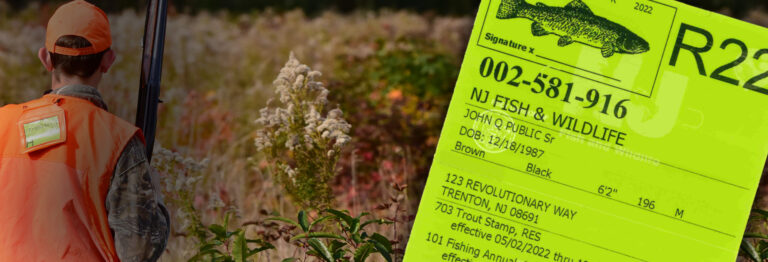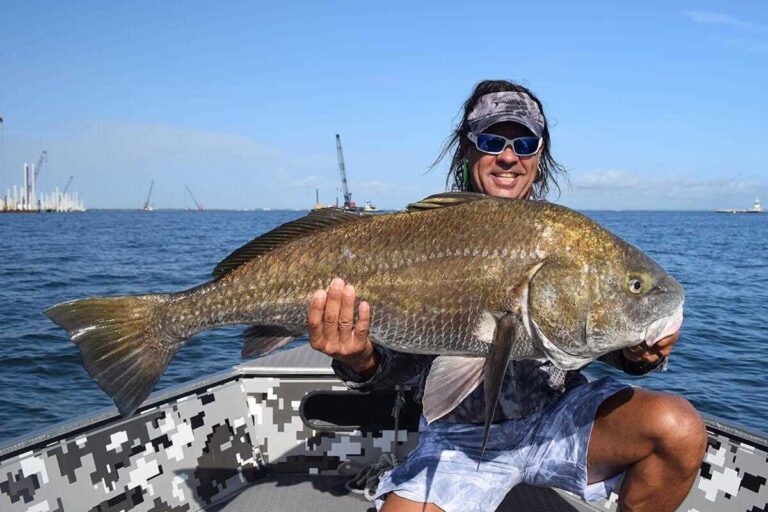Boat Handling Basics: Master the Art of Seamanship
Boat handling basics involve mastering essential skills to navigate and control a boat effectively. Understanding steering, throttle control, and docking techniques are crucial for safe and efficient boating.
When handling a boat, it is important to have proper training and experience to ensure the safety of yourself, passengers, and other boaters. Additionally, knowledge of navigational rules and weather conditions is essential for a successful boating experience. Equipping oneself with these basic boat handling skills will enable you to confidently steer, accelerate, and dock a boat, ensuring an enjoyable and safe time on the water.
Mastering boat handling basics can empower you to fully enjoy the freedom and thrill of boating.
Understanding Boat Terminology And Components
Understanding Boat Terminology and Components When it comes to boat handling, knowing the basic terminology and key components of a boat is essential. Whether you’re a seasoned boater or a beginner, understanding boat terminology will help you navigate and communicate effectively on the water. In this section, we will differentiate between bow, stern, port, and starboard, as well as recognize key boat components such as the hull, deck, cabin, and keel. Differentiating between bow, stern, port, and starboard To navigate a boat successfully, it’s crucial to understand the directional terms used aboard a vessel. Let’s break it down: 1. Bow: The bow refers to the forward or front part of the boat. It’s the pointy end that cuts through the water. 2. Stern: On the other hand, the stern is the aft or rear part of the boat. It’s the opposite of the bow and is often where the engine is located. 3. Port: Port is the left side of the boat when facing the bow. To remember this, just think of the word “port” having four letters, just like the word “left.” 4. Starboard: Starboard is the right side of the boat when facing the bow. To differentiate it from “port,” remember that “starboard” and “right” both have the letter “r.” Recognizing key boat components: hull, deck, cabin, and keel Now that we’ve covered basic directional terms, let’s move on to the key components of a boat: 1. Hull: The hull is the main body of the boat, serving as its floating structure. It is usually made of fiberglass, aluminum, or wood. The hull determines the boat’s stability, buoyancy, and overall performance. 2. Deck: The deck is the horizontal surface of the boat, located above the hull. It provides space for passengers and storage, and can be further divided into sections, such as the bow deck or cockpit. 3. Cabin: The cabin is the enclosed area below deck, offering shelter and sleeping quarters. It can vary in size and amenities depending on the type of boat. 4. Keel: The keel is a structural element that runs along the bottom of the hull. It helps the boat maintain stability and prevents it from being easily capsized. To summarize, understanding boat terminology and components is fundamental in boat handling. Differentiating between the bow, stern, port, and starboard allows for clear communication and navigation. Recognizing the key components of a boat, such as the hull, deck, cabin, and keel, provides a better understanding of its structure and functionality. With this knowledge, you can confidently embark on your boating adventures.Basics Of Navigation
When it comes to boating, having a solid understanding of navigation is essential for a safe and enjoyable experience on the water. Navigating a boat requires knowledge of various instruments and aids that help you stay on course and avoid potential hazards. In this section, we will cover the basics of navigation, including an introduction to navigation instruments such as the compass, GPS, and charts, as well as an understanding of navigational aids like buoys, beacons, and markers.
Introduction To Navigation Instruments: Compass, Gps, And Charts
Navigation instruments play a vital role in helping boaters determine their position, plot a course, and stay on track. Here are three essential navigation instruments to familiarize yourself with:
- Compass: The compass is a basic yet indispensable tool in boating. It provides the primary means of determining direction by using the Earth’s magnetic field. Whether electronic or traditional, a compass helps you maintain the right heading even when GPS fails or signals are weak.
- GPS: Global Positioning System (GPS) has revolutionized navigation, making it easier and more accurate than ever before. GPS receivers use a network of satellites to determine your precise location on the Earth’s surface. They also provide valuable information like speed, course, and distance to waypoints.
- Charts: Nautical charts are detailed maps specifically designed for maritime navigation. They depict coastlines, water depths, buoy positions, and other crucial information. Charts are indispensable for route planning, identifying potential hazards, and navigating unfamiliar waters. Moreover, they come in both paper and electronic formats.
Understanding Navigational Aids: Buoys, Beacons, And Markers
Navigation aids are visual signals used to guide boaters safely through waterways. They help you identify channels, hazards, and obstructions, ensuring a smooth and hazard-free journey. Here are some important navigational aids to be aware of:
| Navigational Aid | Description |
|---|---|
| Buoys | Buoys are floating devices anchored at specific locations. They feature distinct shapes, colors, numbers, and lights to provide information about navigational channels, hazards, and the right side to pass. |
| Beacons | Beacons are fixed markers usually located on land or structures near the water. They offer guidance by displaying lights of different colors, shapes, and flash patterns, indicating specific positions or hazards. |
| Markers | Markers are aids used to identify channels, indicate safe areas, or warn of hazards. They can be buoys, beacons, dayboards, or signs that provide valuable information to boaters. |
By understanding and properly interpreting these navigational aids, boaters can navigate safely and confidently, avoiding potential dangers and staying on the right course.
Essential Maneuvering Techniques
Mastering basic boat handling techniques is crucial for any boater, whether you’re a seasoned sailor or a newbie. In this section, we will delve into two specific maneuvers that are essential for every boat owner to learn: docking and undocking, and navigating tight spaces. By mastering these maneuvers, you’ll feel more confident and in control of your vessel, ensuring a safe and enjoyable boating experience.
H3mastering Basic Boat Handling Techniques: Docking And Undocking/h3
Docking and undocking are often seen as the most challenging aspects of boat handling. However, with practice and understanding of the fundamentals, you can overcome any anxiety associated with these maneuvers. Whether you’re approaching a dock, a marina slip, or leaving a crowded harbor, following these techniques will help you dock and undock smoothly:
- Approach at a controlled speed: Whether you’re docking or undocking, maintaining a controlled speed is essential. Slowly approach the dock or slip, adjusting your speed according to the wind, current, and other factors that may affect your maneuver.
- Use timely and precise helm commands: Clear communication with your crew is vital during docking and undocking. Assign someone to stand on the bow and relay important information to the helmsman. Practice helm commands such as “hard to port” or “hard to starboard” to ensure a smooth turn.
- Utilize boat lines and fenders: Strategic placement of fenders will protect your boat from colliding with the dock or other vessels. Have lines prepared and ready to use to secure your boat to the dock or slip as soon as you’re in position.
- Be prepared to correct: Even the most experienced boaters may need to make adjustments during docking or undocking. Don’t hesitate to utilize reverse thrusters or reverse gear to correct your position if needed.
H3navigating Tight Spaces: Turning And Pivoting/h3
As a boat owner, you may find yourself navigating tight spaces more often than you expect. Whether you’re maneuvering through a narrow channel, making a tight turn in a marina, or pivoting within a confined area, these techniques will help you navigate with ease:
- Master the pivot turn: The pivot turn is a useful technique to make tight turns in constrained spaces. To execute a pivot turn, reduce your speed to idle, shift the engine into reverse, and turn the wheel hard in the desired direction. The boat will pivot around its center, allowing you to navigate sharp turns effortlessly.
- Use spring lines: Spring lines can be indispensable when you need to make a tight turn or maneuver your boat in limited space. Looping a line around a dock cleat and bringing it back to your boat’s midship will allow you to pivot in the opposite direction.
- Master the three-point turn: The three-point turn is another maneuver that comes in handy when navigating tight spaces. Slowly bring your boat to a stop, shift into reverse, turn the wheel hard to the desired direction, and gradually increase the throttle to execute the turn.
By familiarizing yourself with these essential maneuvering techniques, you’ll have the confidence and skills to handle your boat in any situation. Remember, practice makes perfect, so don’t be afraid to get out on the water and hone your boat handling skills.
Safety Guidelines And Best Practices
When it comes to boating, safety should always be the top priority. Understanding and following safety guidelines and best practices is essential for a safe and enjoyable experience on the water. In this section, we will discuss the importance of life jackets and safety equipment, as well as understanding right-of-way rules and collision avoidance. Let’s dive in!
Importance Of Life Jackets And Safety Equipment
Wearing a life jacket is a crucial safety measure that should never be overlooked. Whether you’re an experienced boater or a beginner, accidents can happen, and a life jacket can mean the difference between life and death. It is important to choose a life jacket that is Coast Guard-approved and properly fitting for each passenger on board.
In addition to a life jacket, having the necessary safety equipment on board is equally important. This includes items such as a throwable flotation device, a fire extinguisher, flares, and a first aid kit. These items may seem like basic requirements, but they can play a vital role in emergency situations, ensuring you can handle unforeseen circumstances with confidence.
Understanding Right-of-way Rules And Collision Avoidance
Boating etiquette and understanding right-of-way rules are critical for maintaining safety and order on the water. Knowing who has the right-of-way in various situations can help prevent collisions and maintain a smooth flow of traffic.
Here are some key right-of-way rules to keep in mind:
- Powerboats should yield to sailboats and vessels under paddle or oar power.
- Vessels traveling downstream should yield to those going upstream, especially in narrow channels.
- When two powerboats are approaching each other head-on, both should alter their course to starboard (right) to avoid collision.
- When overtaking another vessel, the overtaking boat should keep a safe distance and avoid impeding the vessel being overtaken.
Remember, it is your responsibility as a boater to know and follow the right-of-way rules in your specific area and always be vigilant for other boats around you.
In addition to understanding right-of-way rules, collision avoidance techniques are essential to prevent accidents. Maintaining a proper lookout, reducing speed in congested areas, and staying alert for navigational hazards are some best practices to ensure a safe and incident-free boating experience.
By prioritizing safety, following life jacket and safety equipment guidelines, and understanding right-of-way rules and collision avoidance, you can enjoy your time on the water responsibly and with peace of mind.
Handling Adverse Weather Conditions
Whether you’re a seasoned sailor or a beginner in the world of boating, knowing how to handle adverse weather conditions is essential for a safe and enjoyable trip on the water. Unpredictable weather can pose challenges, but with the right preparation and knowledge, you can navigate through heavy winds, rough seas, rain, fog, and reduced visibility. In this section, we will provide you with valuable tips and techniques for handling adverse weather conditions that you may encounter while boating.Preparing For Heavy Winds And Rough Seas
When the wind picks up and the seas get rough, it’s crucial to be prepared. Here are some key points to keep in mind: 1. Check the weather forecast: Planning ahead is crucial in adverse weather conditions. Before heading out, make sure to check the weather forecast and pay attention to any special warnings or advisories. This will give you an idea of what to expect and allow you to plan your trip accordingly. 2. Secure loose items: Heavy winds and rough seas can cause items on your boat to shift or fall overboard. Secure loose items such as fishing equipment, cushions, and gear before you set sail. This will prevent any accidents and keep your boat organized. 3. Reduce sail area: If you’re sailing, reducing the amount of sail area can help you better handle strong gusts and rough seas. Reefing your sails or switching to smaller sails will decrease the surface area exposed to the wind, providing better control and balance. 4. Keep a steady course: When facing heavy winds and rough seas, maintaining a steady course is essential. Keep the bow of your boat pointed into the waves, which will minimize the chance of capsizing or taking on water. 5. Use your engine wisely: In adverse weather conditions, your engine can be a valuable tool. Use it to maintain control and steer into the waves if necessary. Remember to keep an eye on your speed and adjust it according to the conditions.Tips For Handling Rain, Fog, And Reduced Visibility
Rain, fog, and reduced visibility can significantly impact your boating experience, but with the right techniques, you can navigate through them safely. Here are some useful tips to keep in mind: 1. Use navigation aids: In situations where visibility is reduced, rely on your navigation aids such as GPS, radar, and depth sounders. These tools will help you stay on course and avoid any potential hazards. 2. Use proper lighting: Ensure that all necessary lights onboard are functioning properly. This includes navigation lights, anchor lights, and any additional lighting that may be required in poor visibility conditions. Proper lighting will make your boat more visible to other vessels and help you maintain safe distances. 3. Slow down: Reduce your speed when rain, fog, or reduced visibility impede your ability to see clearly. Slowing down will give you more time to react to any obstacles, such as other boats or navigational hazards. 4. Listen for sounds: In foggy conditions, sound can play a crucial role in navigating. Listen for sounds of other boats, foghorns, buoy bells, or any other audible cues that can assist you in determining your location and the presence of other vessels. 5. Use radar reflectors: Installing radar reflectors on your boat will greatly enhance your visibility on radar screens of other vessels. This ensures that even if you might have difficulty seeing other boats, they will be able to detect your presence. Being prepared and equipped with the knowledge to handle adverse weather conditions is key to a safe and enjoyable boating experience. Remember, safety should always be your top priority when it comes to braving the elements on the water. Stay vigilant, adapt your boating techniques as needed, and keep an eye on the ever-changing weather conditions. By doing so, you will increase your confidence and maximize your enjoyment while boating, rain or shine.Conclusion
Mastering boat handling skills is crucial for any boater, whether experienced or just starting out. By understanding the basics of boat handling, such as steering, navigating, and controlling speed, you can ensure a safe and enjoyable time on the water.
Remember to stay alert, follow safety guidelines, and practice regularly to improve your skills. With dedication and practice, you’ll become a confident and skilled boat handler, ready to explore the vast wonders of the open water. Happy boating!



